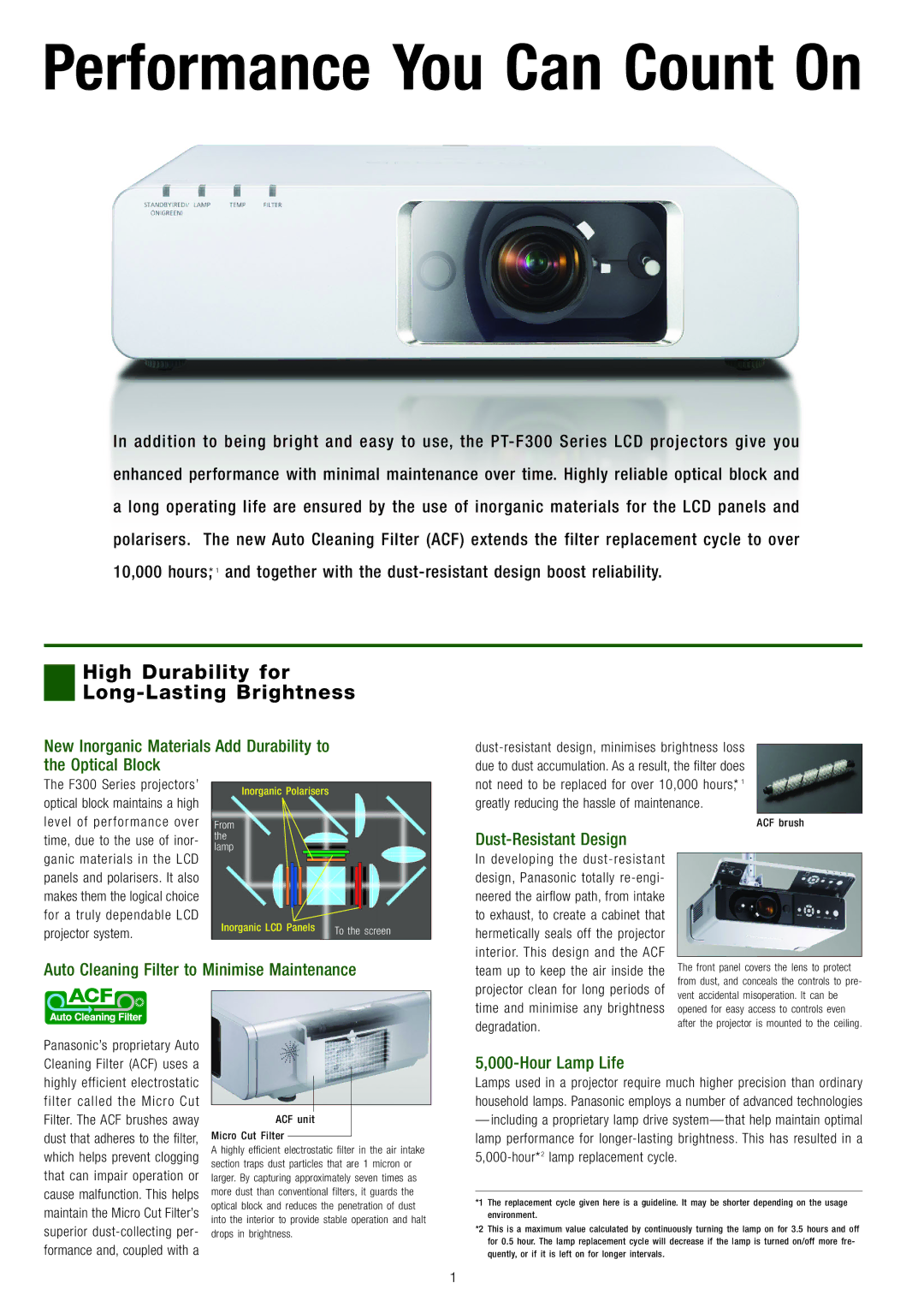
Performance You Can Count On
In addition to being bright and easy to use, the
High Durability for Long-Lasting Brightness
New Inorganic Materials Add Durability to the Optical Block
The F300 Series projectors’ optical block maintains a high level of performance over time, due to the use of inor- ganic materials in the LCD panels and polarisers. It also makes them the logical choice for a truly dependable LCD projector system.
Inorganic Polarisers
From the lamp
Inorganic LCD Panels | To the screen |
|
not need to be replaced for over 10,000 hours,* 1 greatly reducing the hassle of maintenance.
ACF brush
Dust-Resistant Design
In developing the
Auto Cleaning Filter to Minimise Maintenance
team up to keep the air inside the projector clean for long periods of time and minimise any brightness degradation.
The front panel covers the lens to protect from dust, and conceals the controls to pre- vent accidental misoperation. It can be opened for easy access to controls even after the projector is mounted to the ceiling.
Panasonic’s proprietary Auto Cleaning Filter (ACF) uses a highly efficient electrostatic filter called the Micro Cut Filter. The ACF brushes away dust that adheres to the filter, which helps prevent clogging that can impair operation or cause malfunction. This helps maintain the Micro Cut Filter’s superior
ACF unit
Micro Cut Filter
A highly efficient electrostatic filter in the air intake section traps dust particles that are 1 micron or larger. By capturing approximately seven times as more dust than conventional filters, it guards the optical block and reduces the penetration of dust into the interior to provide stable operation and halt drops in brightness.
5,000-Hour Lamp Life
Lamps used in a projector require much higher precision than ordinary household lamps. Panasonic employs a number of advanced technologies
—including a proprietary lamp drive
*1 The replacement cycle given here is a guideline. It may be shorter depending on the usage environment.
*2 This is a maximum value calculated by continuously turning the lamp on for 3.5 hours and off for 0.5 hour. The lamp replacement cycle will decrease if the lamp is turned on/off more fre- quently, or if it is left on for longer intervals.
1
